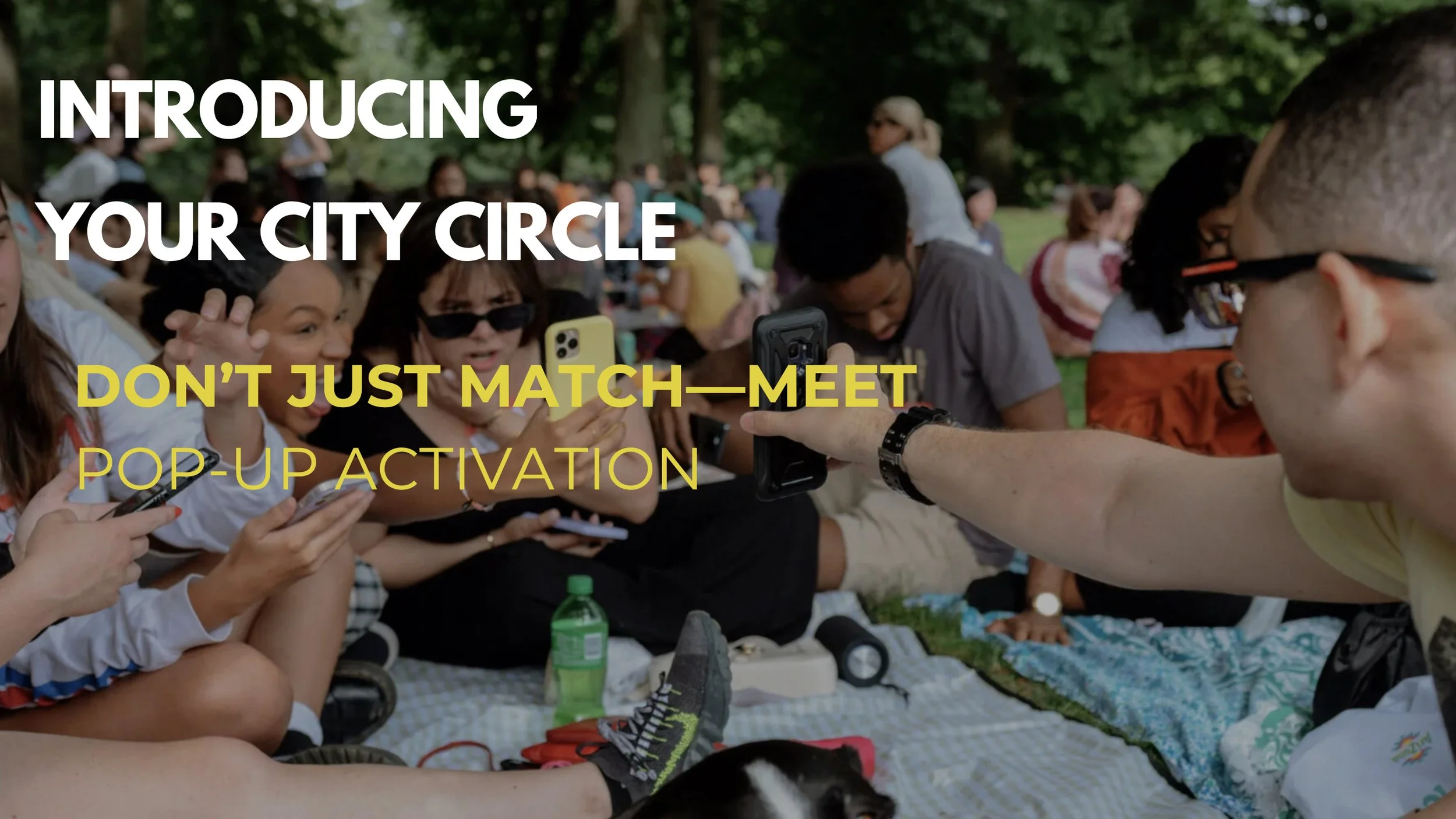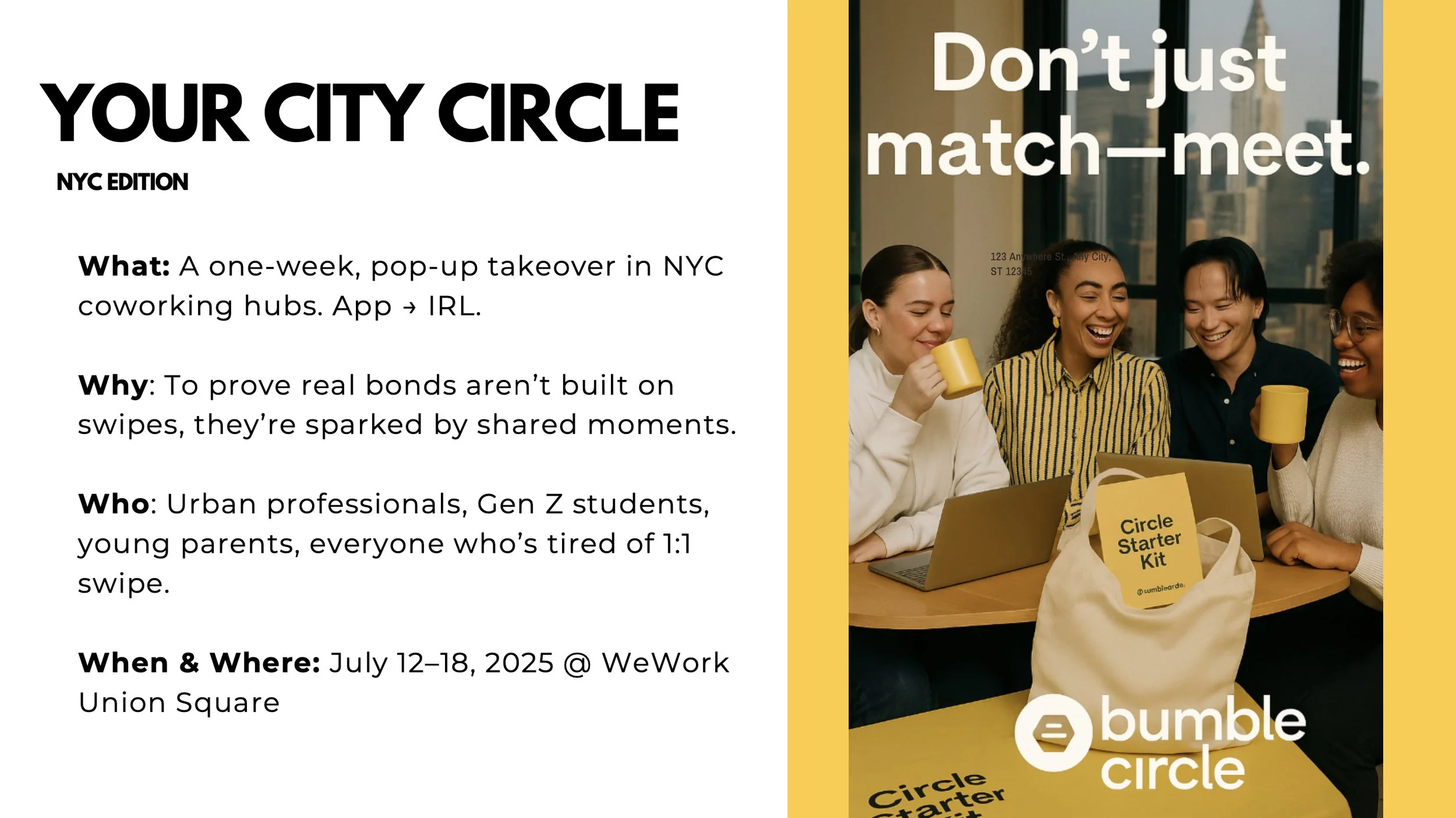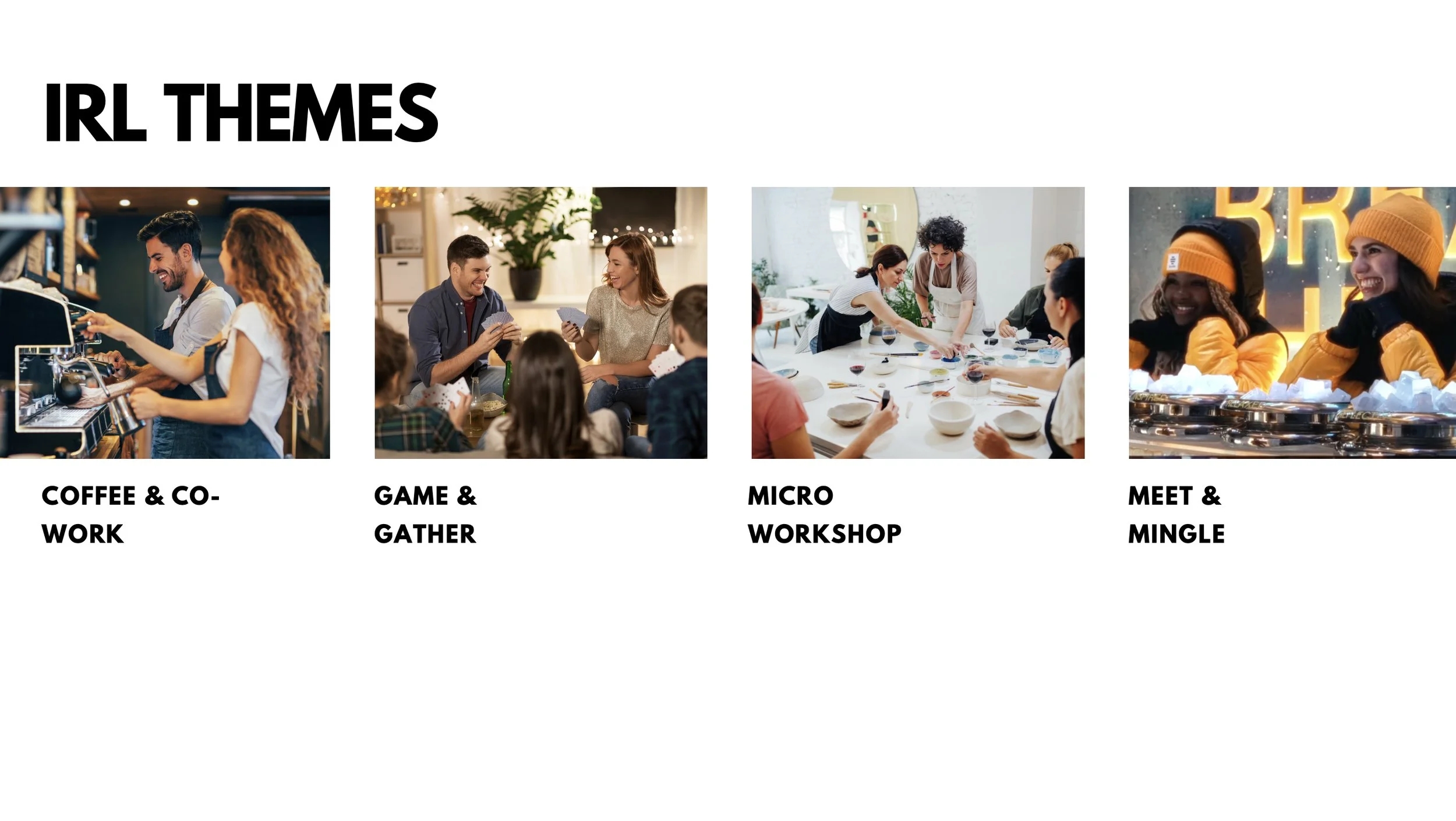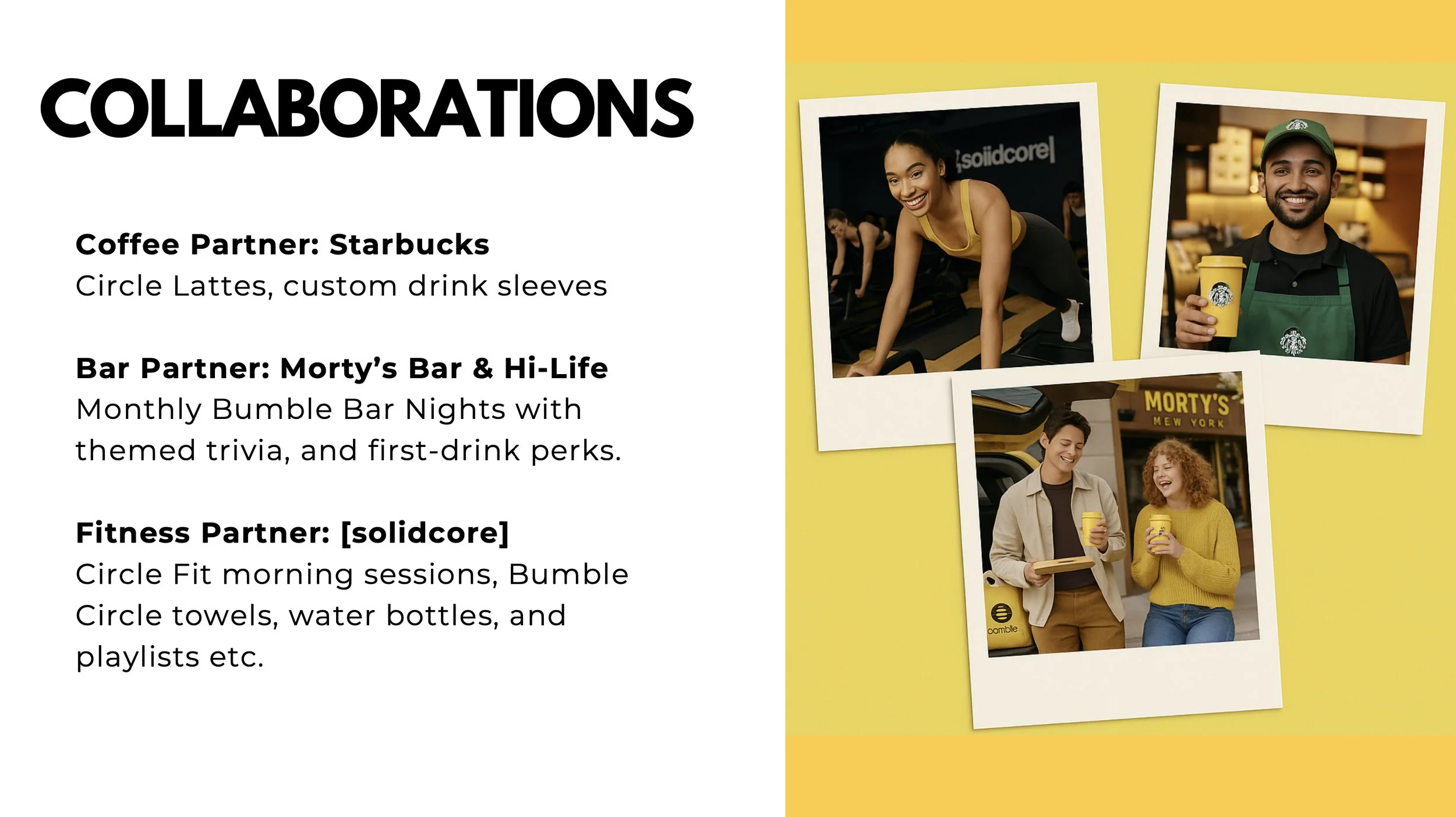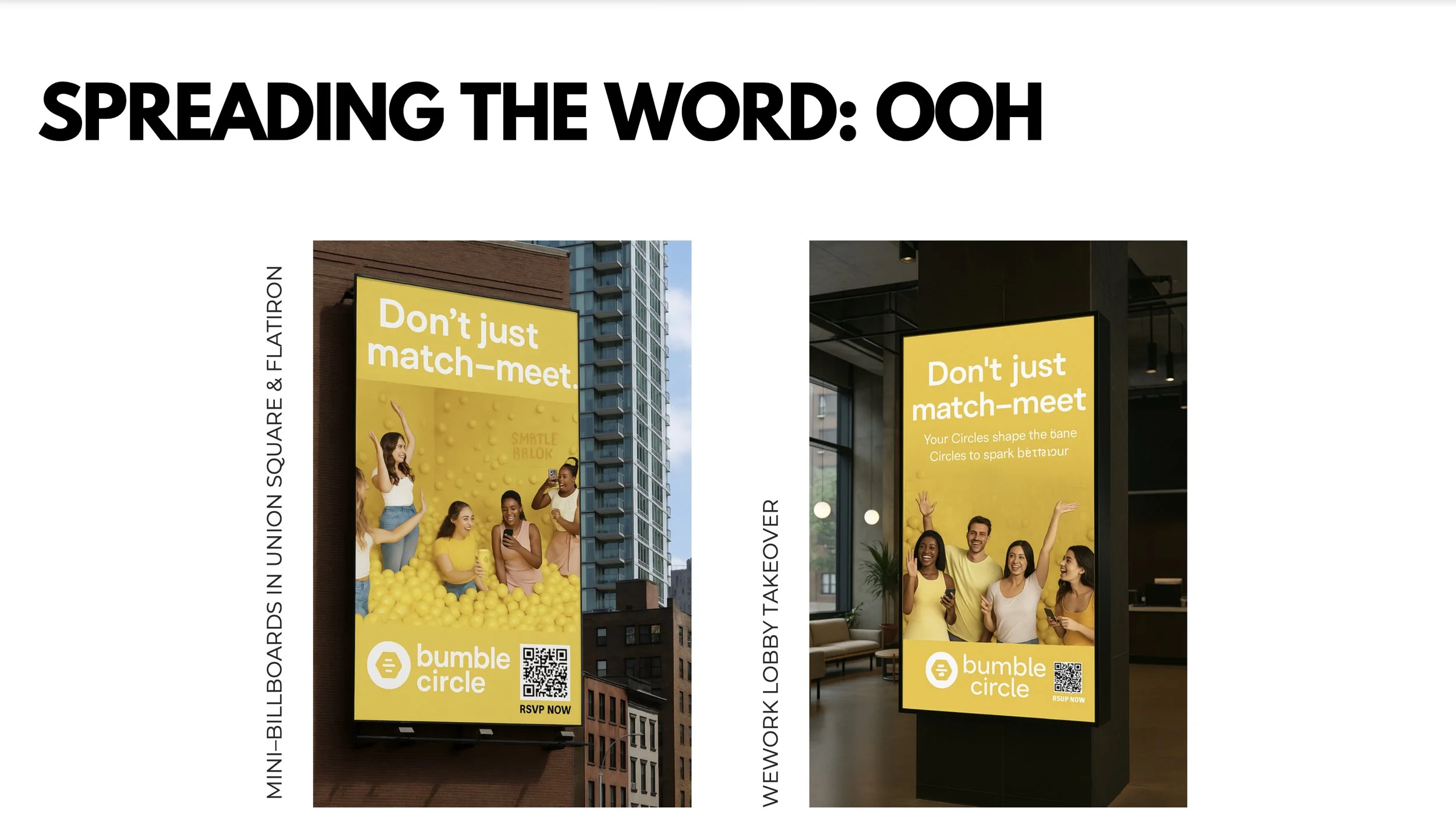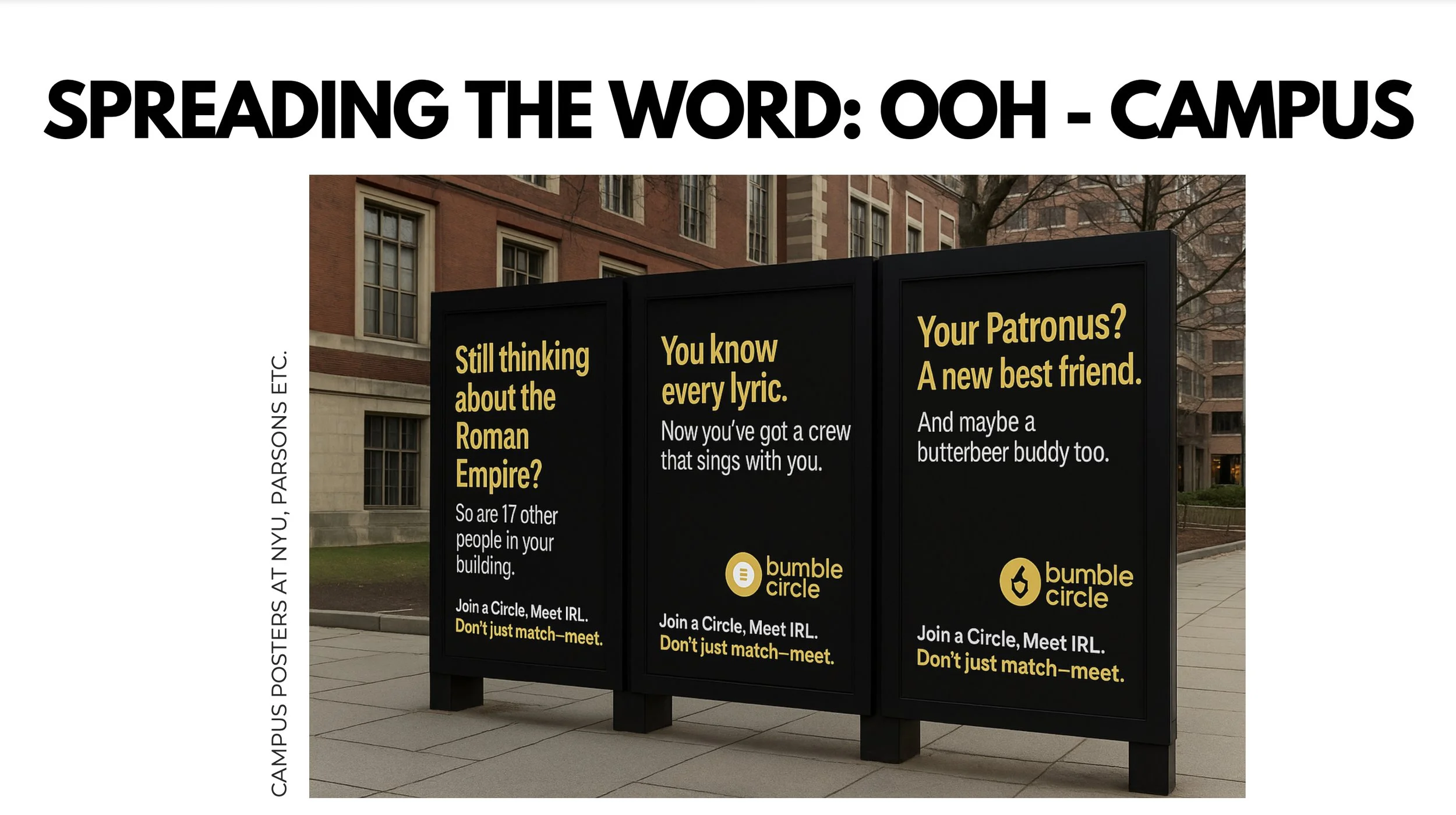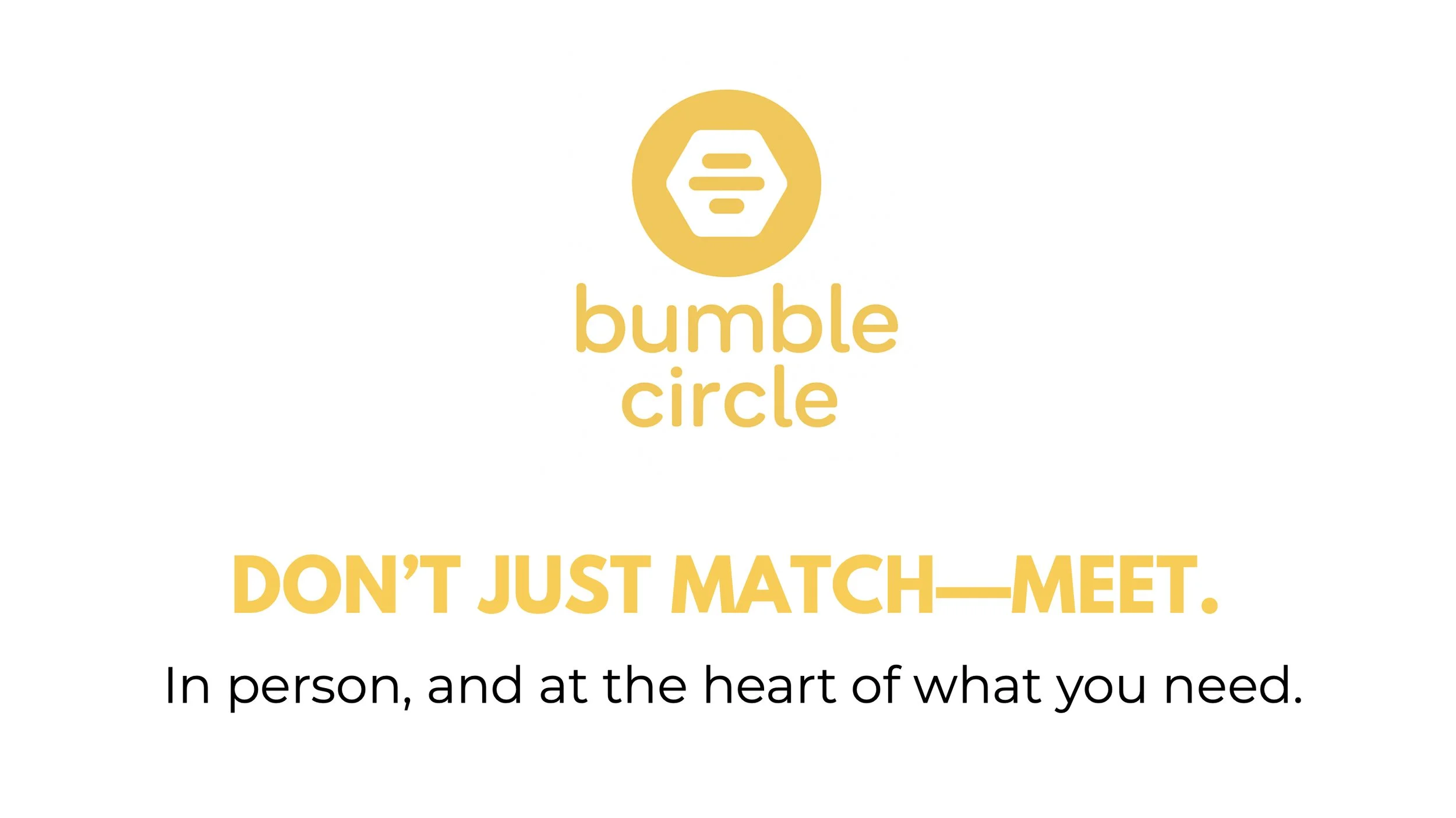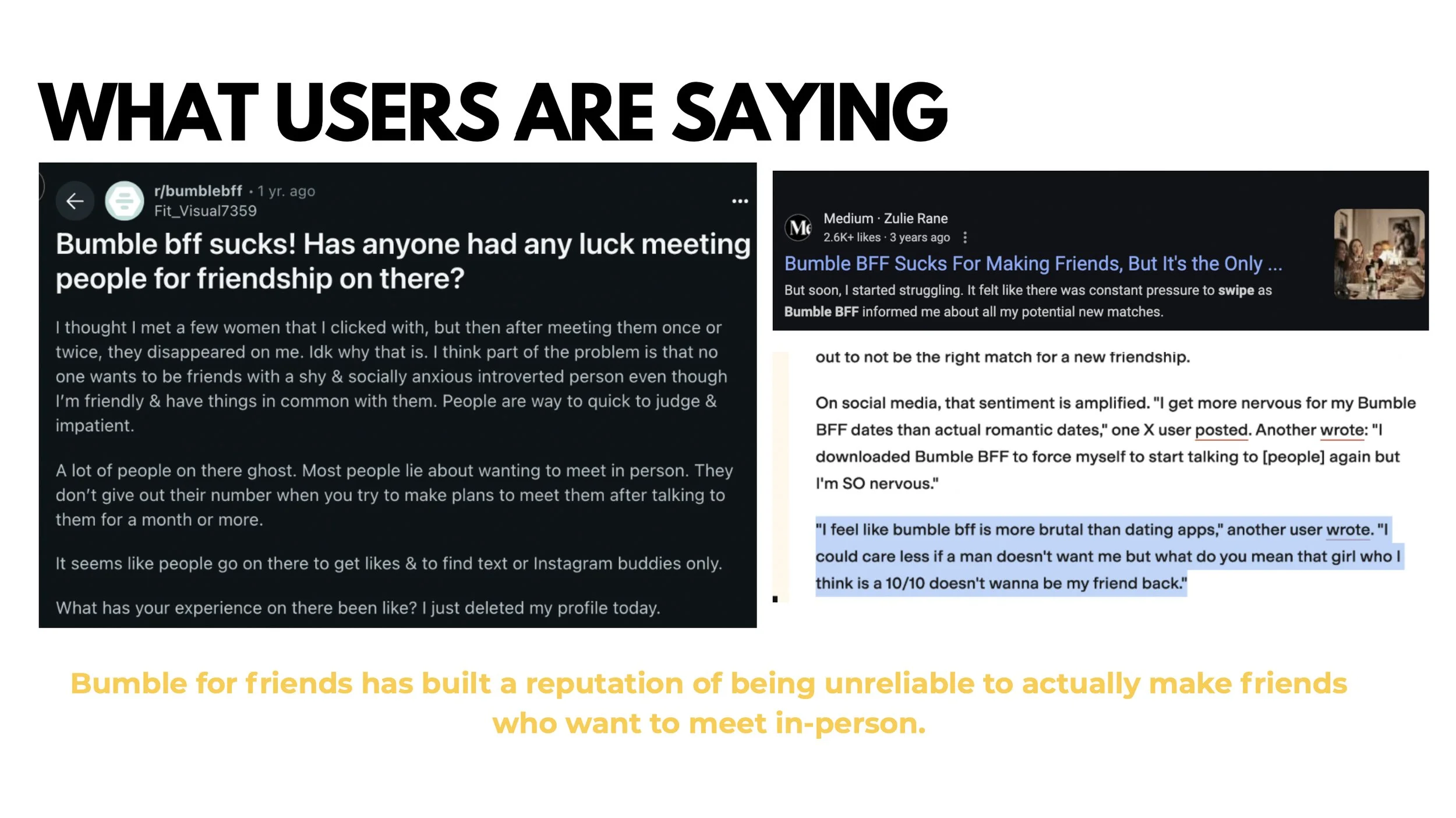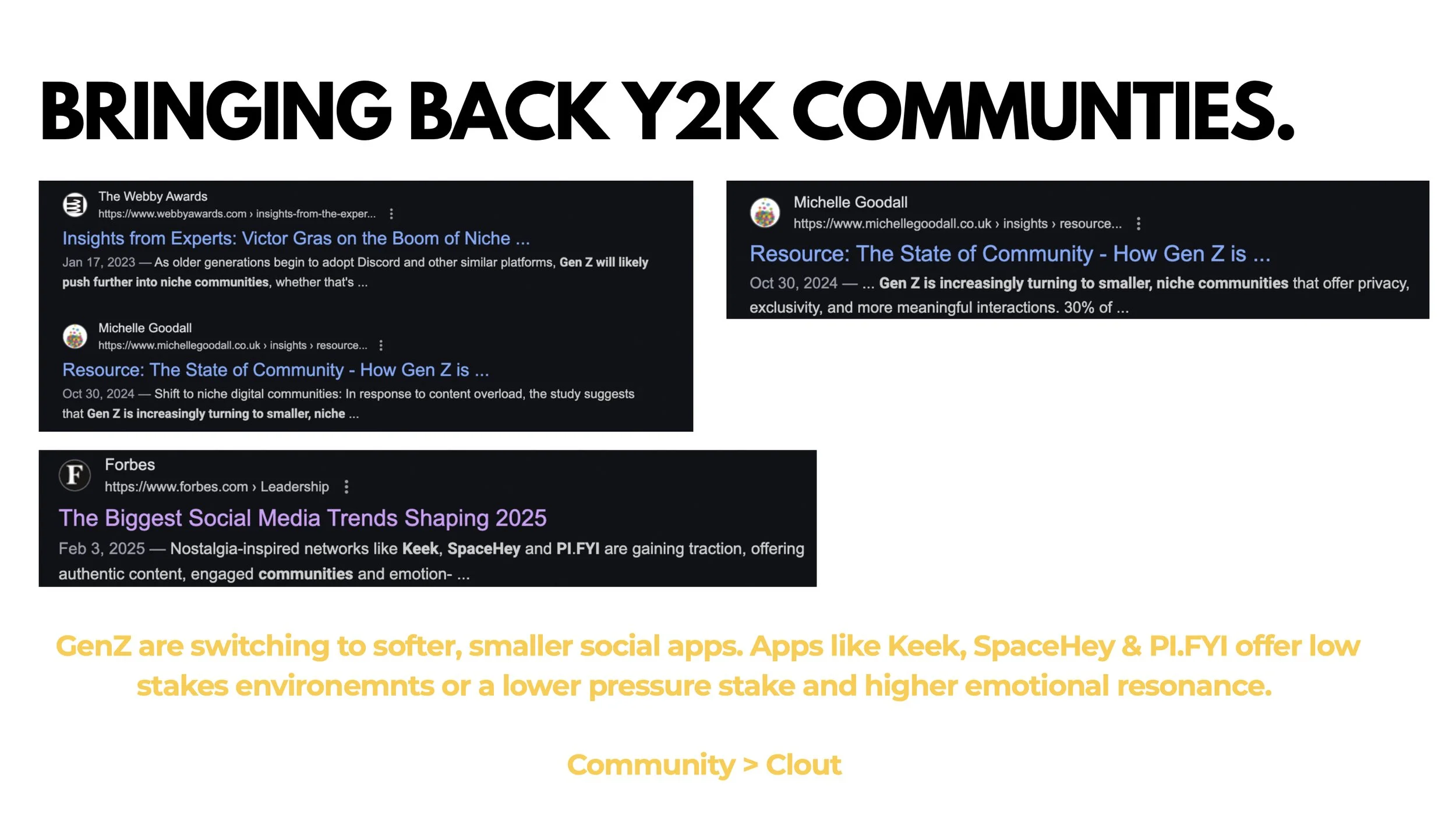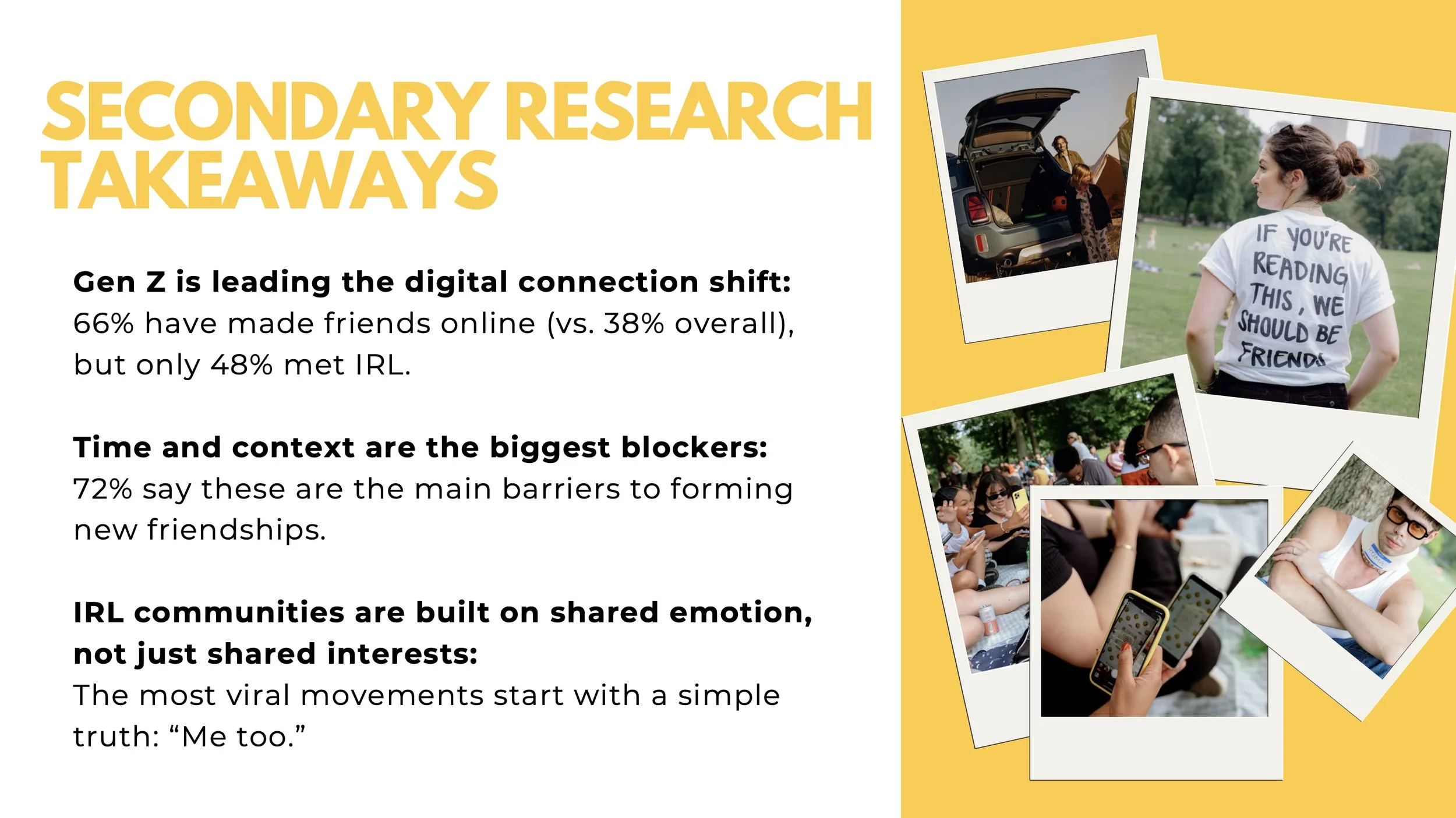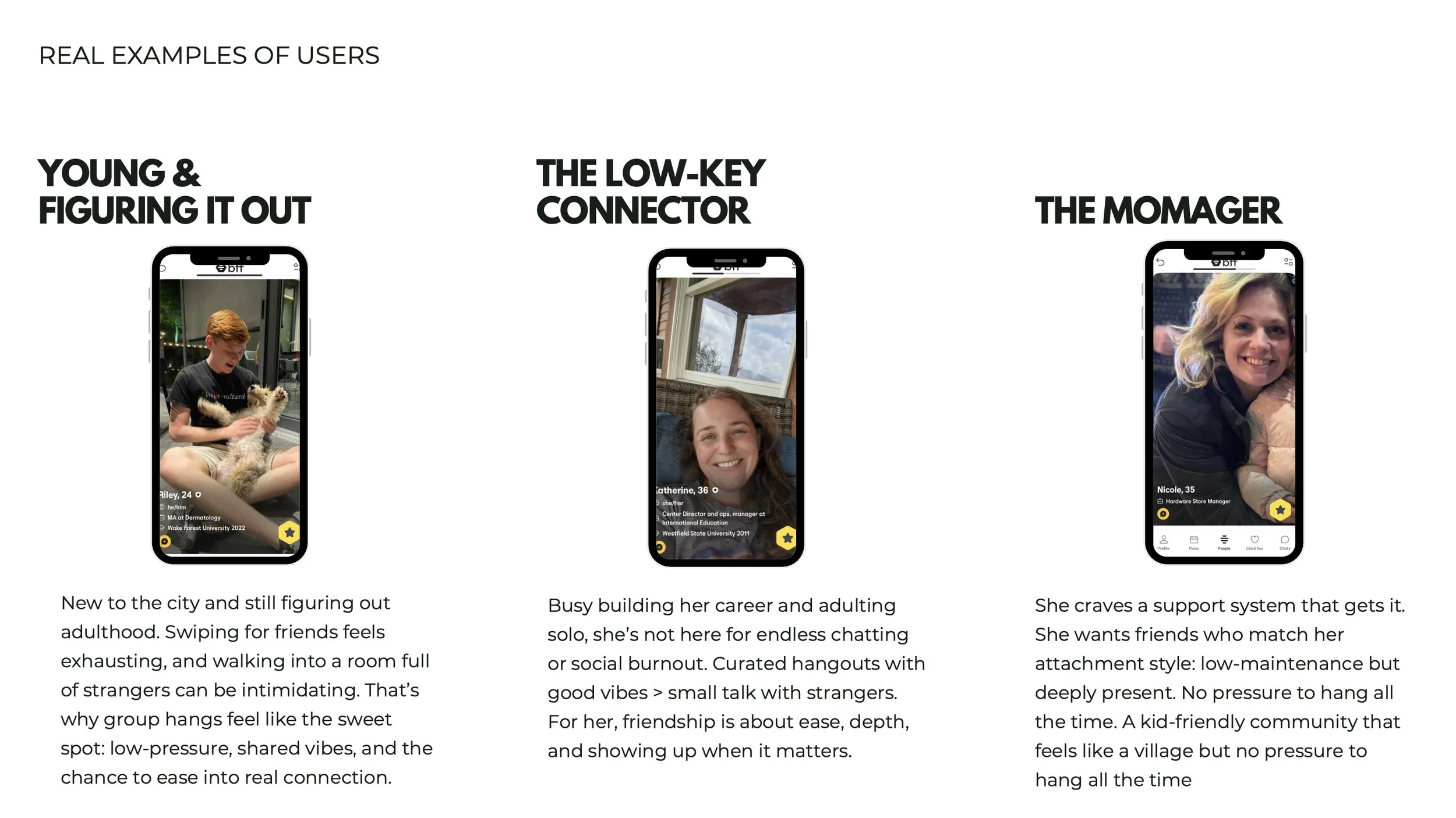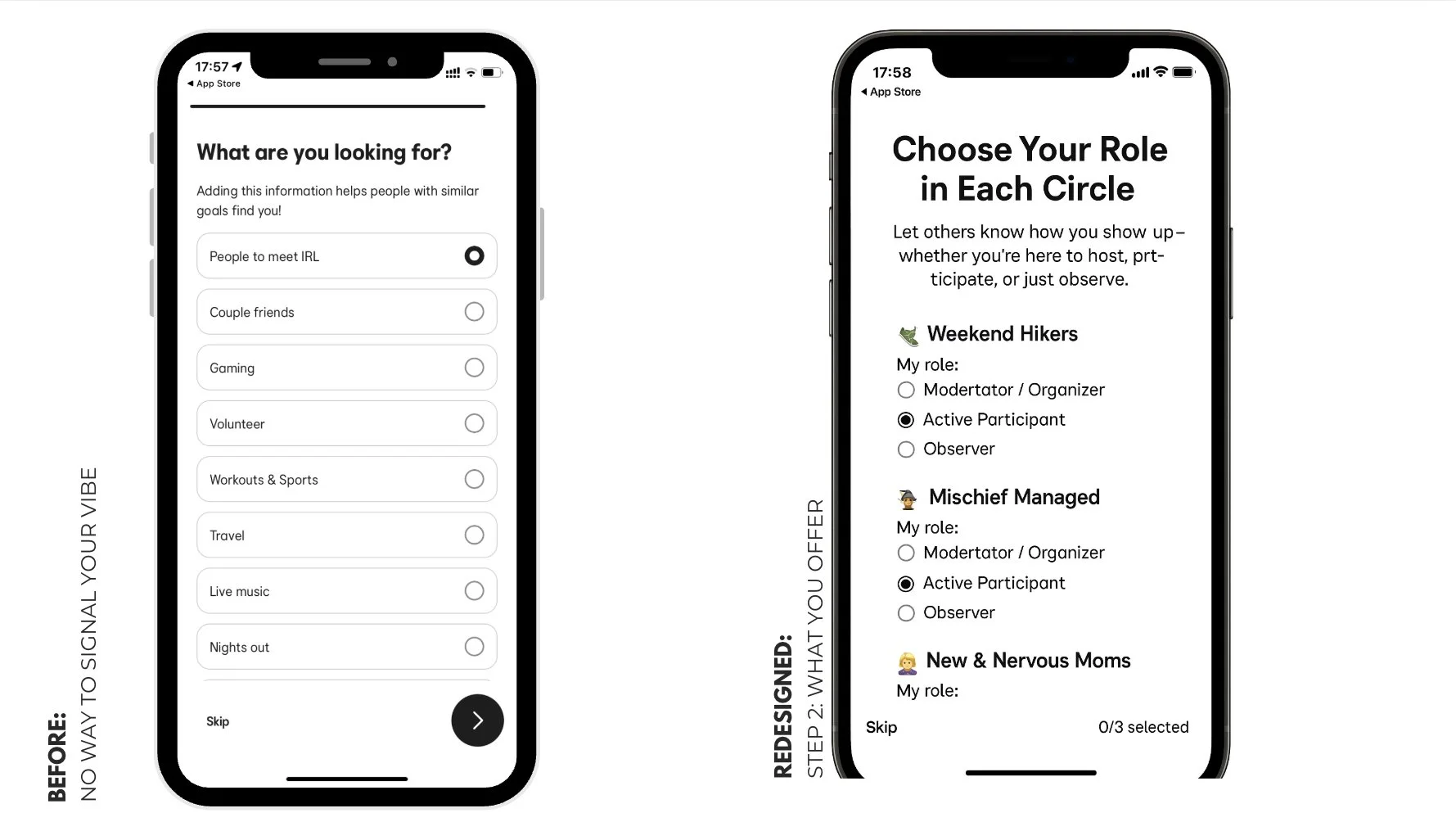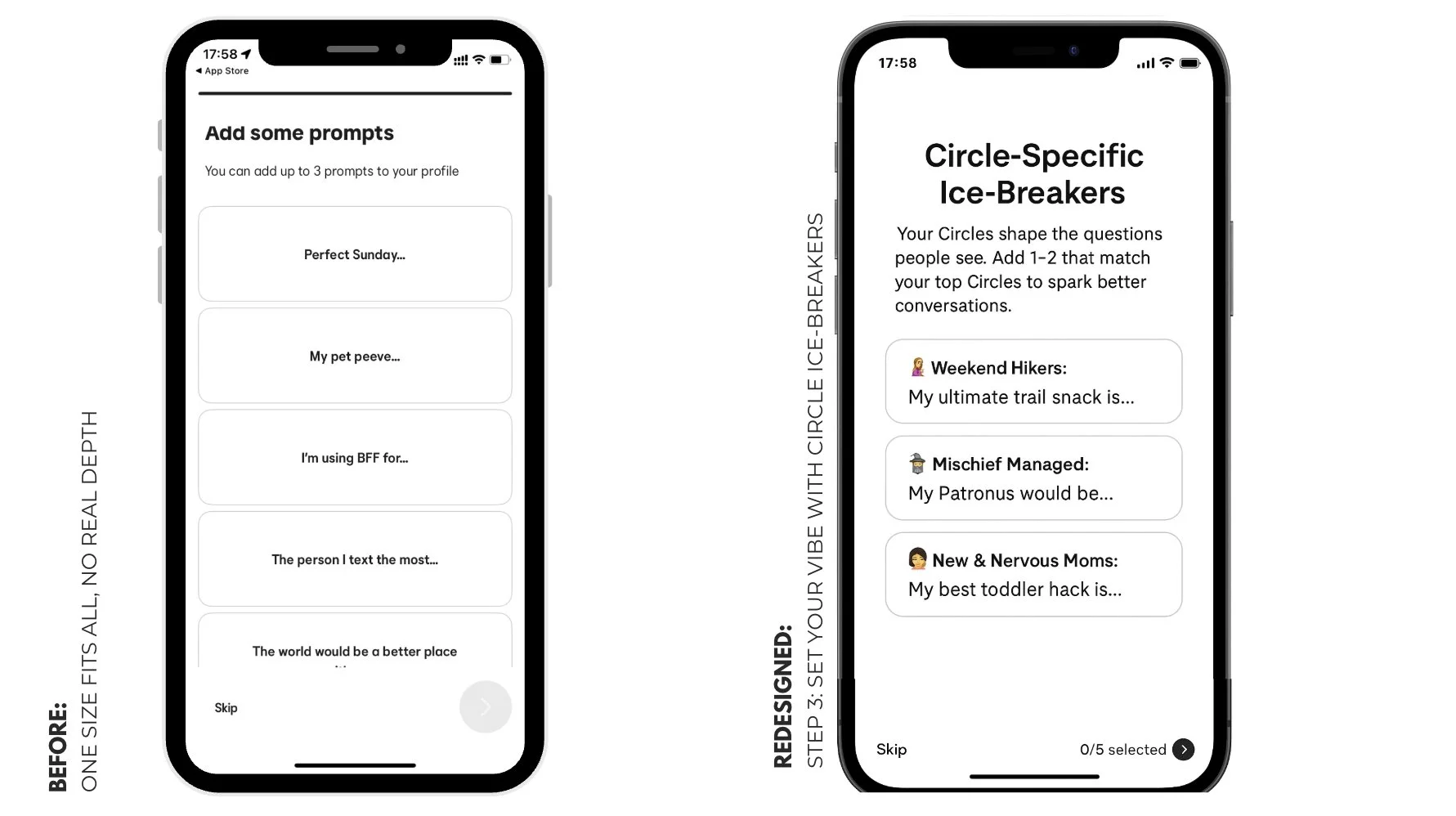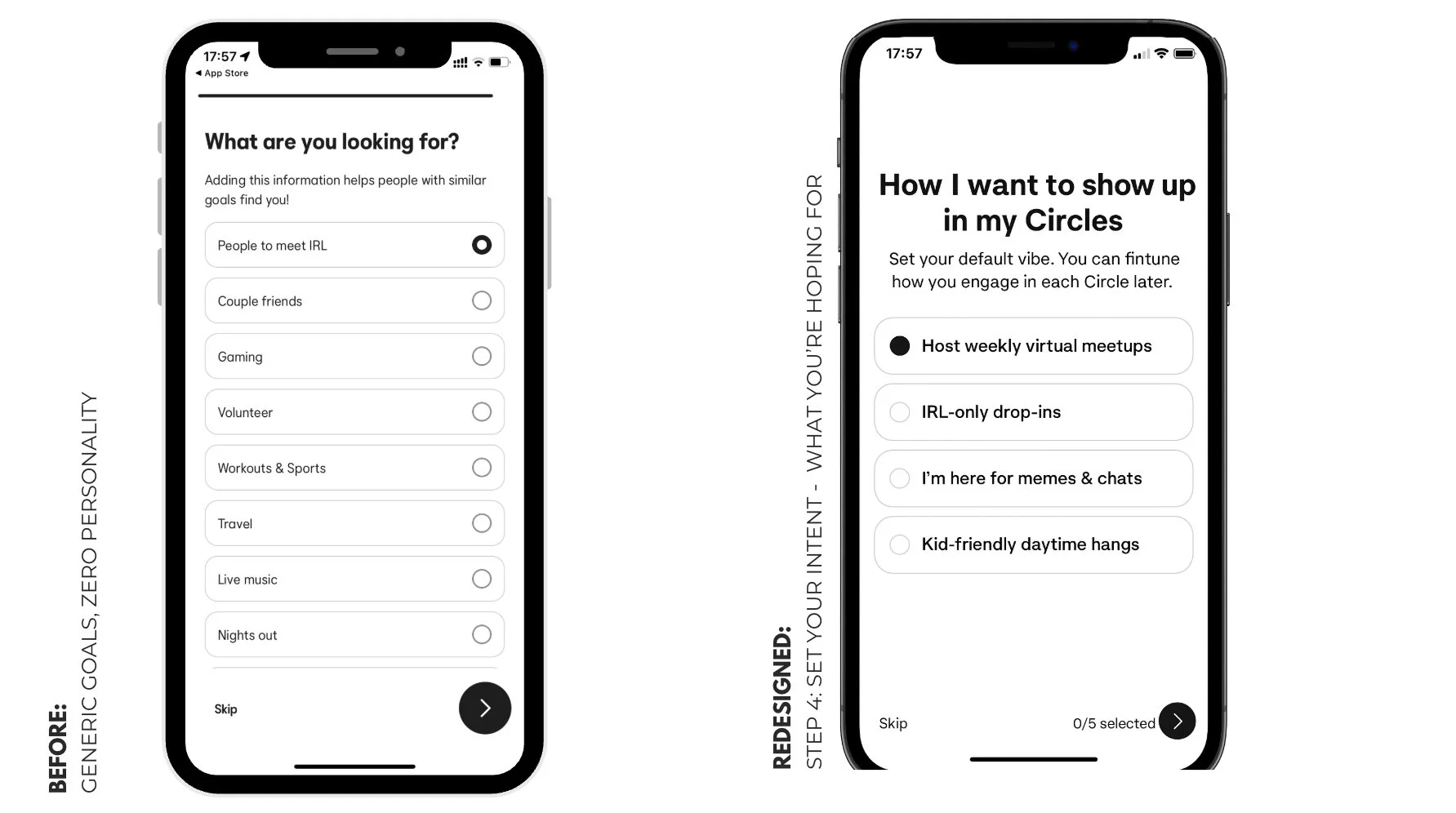Bumble for Friends
Boston University Project
2025
My work on Bumble Circle set out to transform Bumble For Friends from a swipe-based app into a true IRL-first community platform. By reframing friendship as something that grows from shared circles rather than transactional matches, I crafted a strategy to help Bumble move beyond digital swiping and become the go-to space for real-life connection and belonging
THE ASK
Pick a brand that isn’t working well and rebuild its strategy — diagnosis, positioning, product experience, and go-to-market — to solve a real human problem.
THE OPPORTUNITY
Adult friendship is stalling in DMs. Culture is shifting from clout to closeness, with small, IRL communities on the rise — but most “friend” apps still mirror dating flows and under-convert to in-person connection.
THE SOLUTION
Bumble Circle transforms Bumble For Friends from a swipe-based app into an IRL-first community platform. By reframing friendship around shared circles — not transactional matches — it positions Bumble as the go-to space for real-life connection and belonging.
Methodology
Here’s what I did to get to the solution.
-
I spoke with current BFF users, lapsed users, and “BFF-curious” folks to map where momentum dies between first message and meetup. Themes: fear of rejection, desire for low-pressure friendships, and the power of nostalgia plus community as an emotional safety net.
-
TikTok, Reddit, Instagram, and app reviews surfaced repeated pain points: “BFF feels like dating,” stalled chats, and the awkwardness of suggesting plans — along with formats that do convert to IRL, like walk clubs, co-working hours, and board-game nights.
-
I audited friend and community platforms to isolate what moves people from talk to time and place: clear hosts, simple RSVP tools, calendars, reminders, and recurring rituals. Bumble’s edge is brand trust and scale; the gap to close is a group engine that makes belonging obvious from the first tap.
-
Three tailwinds: digital fatigue, the experience economy, and private communities. These shifts create space for smaller circles and IRL by default.
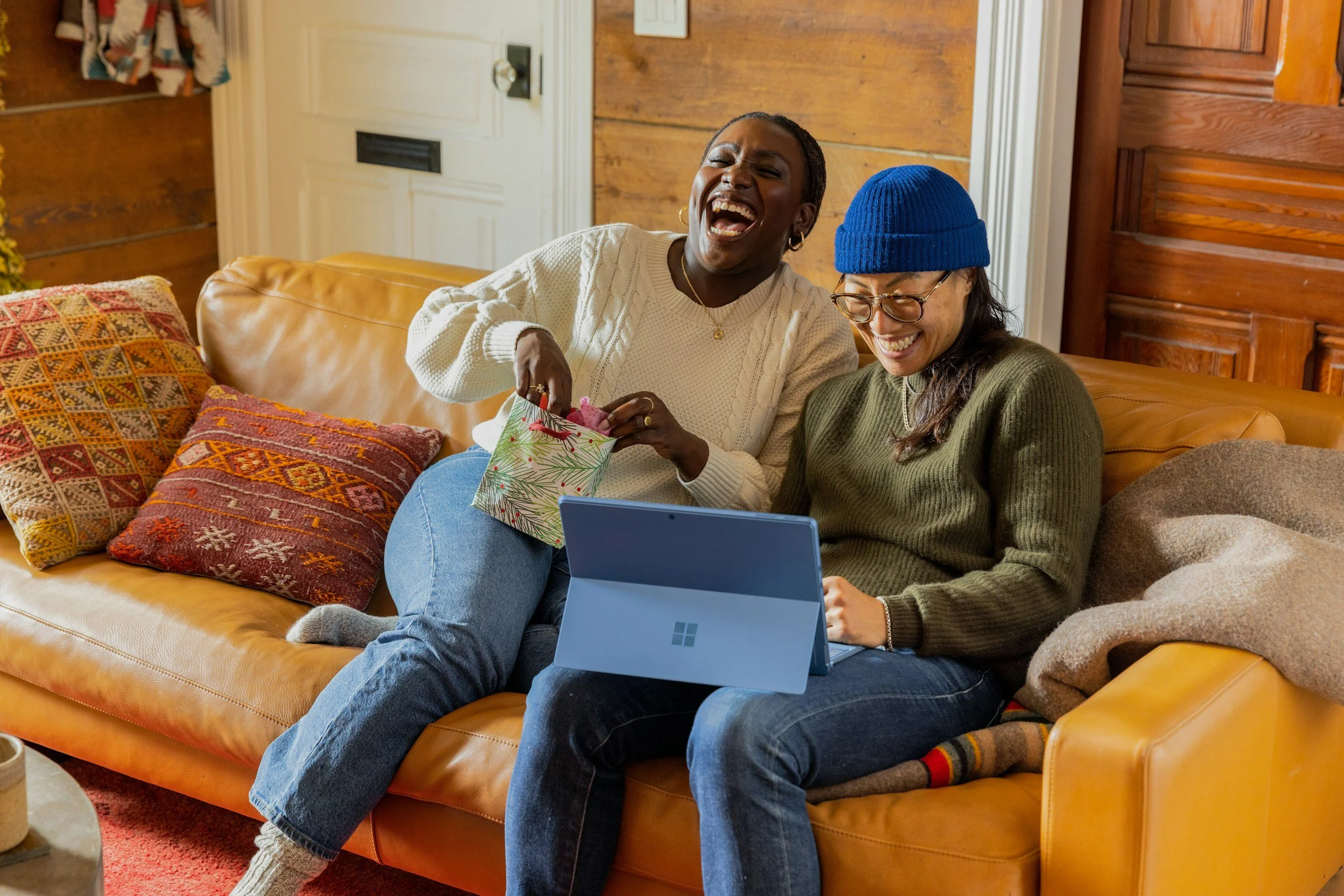
Lets start from the top
THE OPPORTUNITY
Loneliness is mainstream — 1 in 2 adults report feeling lonely — while young adults are flocking to clubs, sports, and hobby meetups. Smaller, safer digital spaces are also exploding. This is whitespace for a product that hands people a room, not just a match.
I don’t want to go through life alone.
Different life stages, same need — low-pressure belonging.
WHO ARE WE TALKING TO?
The Dating-ification of Friendship Apps
Swiping is transactional. Without shared context or experiences, conversations stall and real connection rarely takes off. A one-to-one match flow is great for dating and poor for friendship.
-
Only a small share of Bumble users try BFF — 15 percent — and many chats never make it offline. Ghosting rises when there’s no shared experience to break the ice.
-
Bumble is uniquely positioned to turn digital confidence into real-world friendship. No other friend-finding app can deliver that.
INSIGHT
Real friendship forms when you feel part of something, not just paired with someone.
Strategy
Strategy
Design for circles, not pairs. Default to IRL.
Redesign BFF into Bumble Circle — communities around what you need and love, where belonging is obvious and meeting up is the default next step.
Bumble Circle: Don’t Just Match—Meet
With Circle, you aren’t swiping for friends. You’re stepping into rooms that already make sense for you — parenting support, trivia nights, meme circles, and more.
APP EXPERIENCE
The circle onboards in four moves.
Find upto five circles that actually fit you.
2. Show what you offer so people know how to pull you in
3. Set your vibe with ice-breakers tailored to each Circle
State intent so expectations match from day one
At the heart of the campaign is the “Your City Circle” pop-up activation—a one-week experiential event designed to move users from app to IRL. From coffee & co-work sessions to trivia nights and wellness walks, these curated gatherings give users a safe, low-pressure way to form real bonds.
